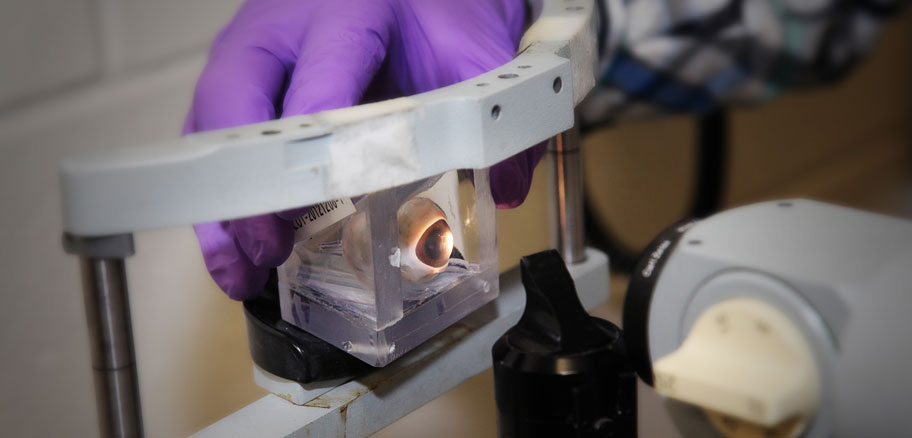Eyeing Ocular Injuries
UTSA researchers study how to protect soldiers from eye injuries caused by IED blasts
Blasting pig eyes with shock waves to simulate the kind of force a soldier might experience from an improvised explosive device has helped UTSA researchers learn more about protecting soldiers from eye injuries.
The experiments on the postmortem pig eyes have been held for the past two years in a basement laboratory at Fort Sam Houston.
The research reveals that an IED shock wave alone -- even in the absence of shrapnel or other particles -- could cause significant damage to the optic nerve, in turn causing partial or total blindness.
Prior to the discovery, vision impairment resulting from IED blasts had been associated with traumatic brain injuries and not damage to the optic nerve.
UTSA biomedical engineering assistant professor Matthew Reilly, distinguished senior lecturer in geological sciences Walter Gray and biomedical engineering adjunct professor William E. Sponsel, M.D., in collaboration with researchers at the U.S. Army Institute of Surgical Research at Joint Base San Antonio–Fort Sam Houston and the UT Health Science Center at San Antonio are conducting the studies.
Reilly has several family members and friends who were injured when serving in the military.
“I wasn’t in the military, but I would like those who serve our country to be better protected in the field or give them better diagnostics when they are injured,” he says. “I want to make sure their quality of life is as high as possible after they have been deployed. I am just trying to give back.”

